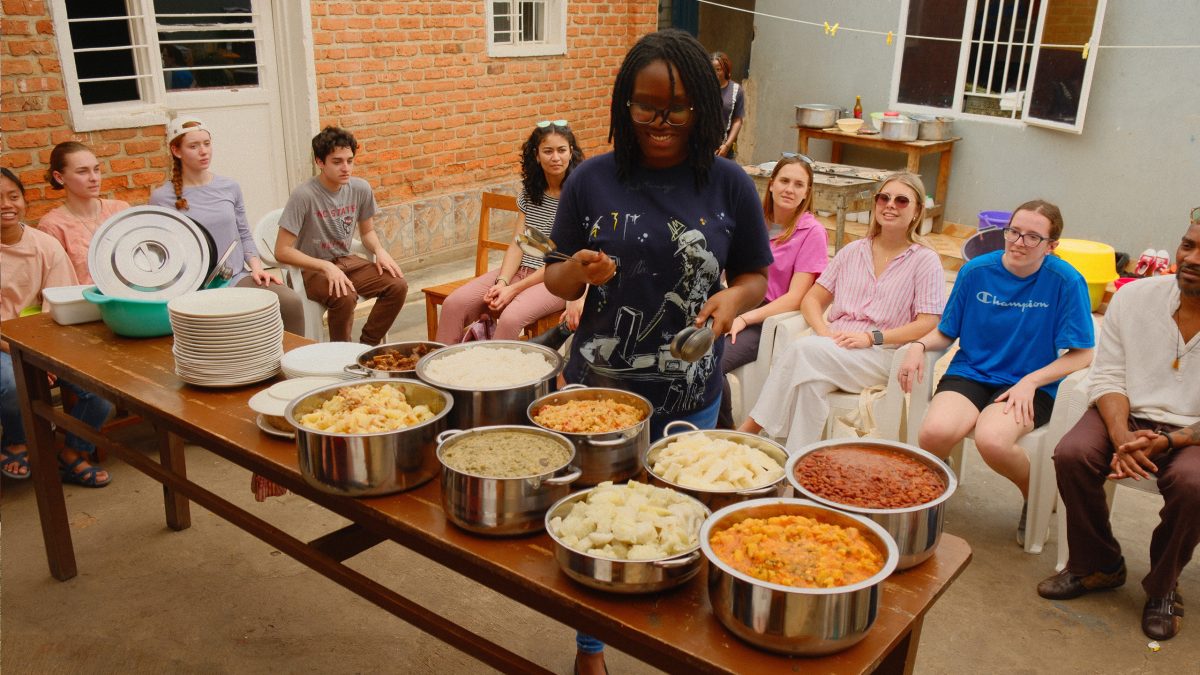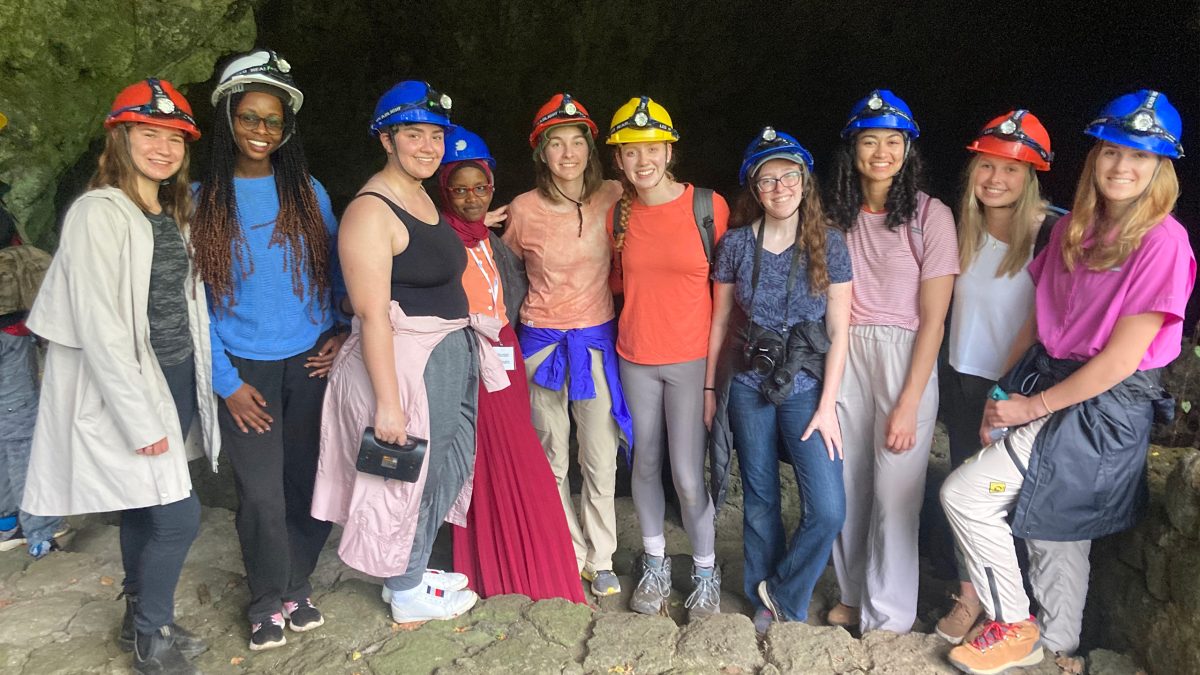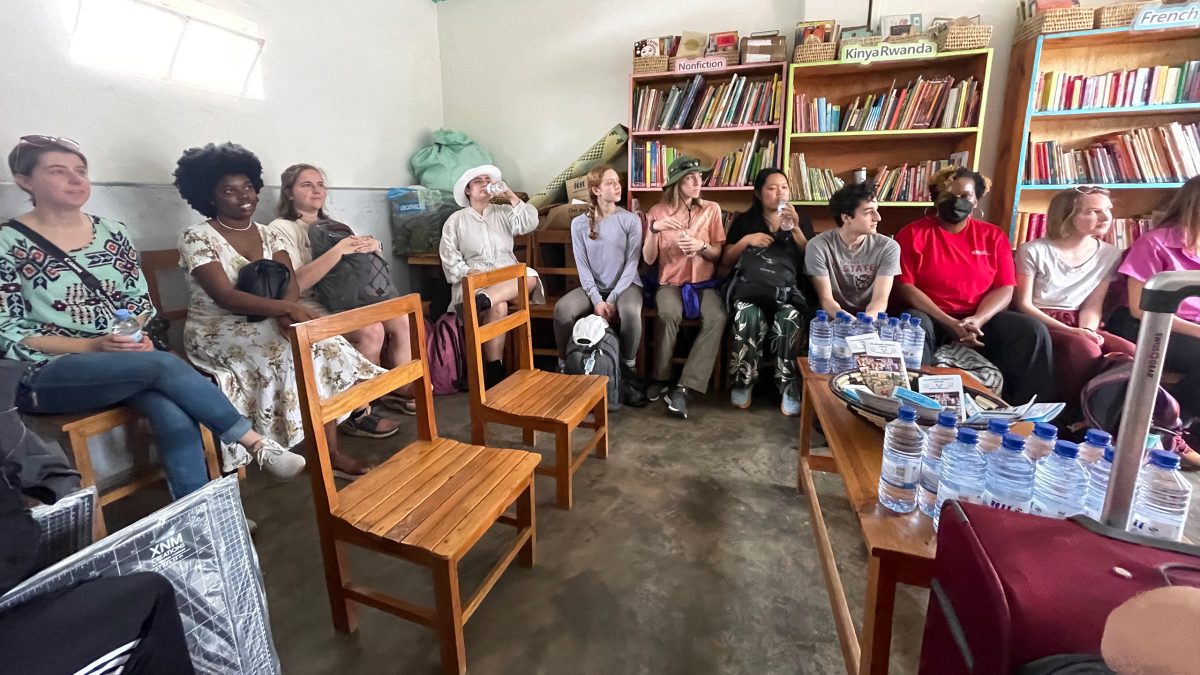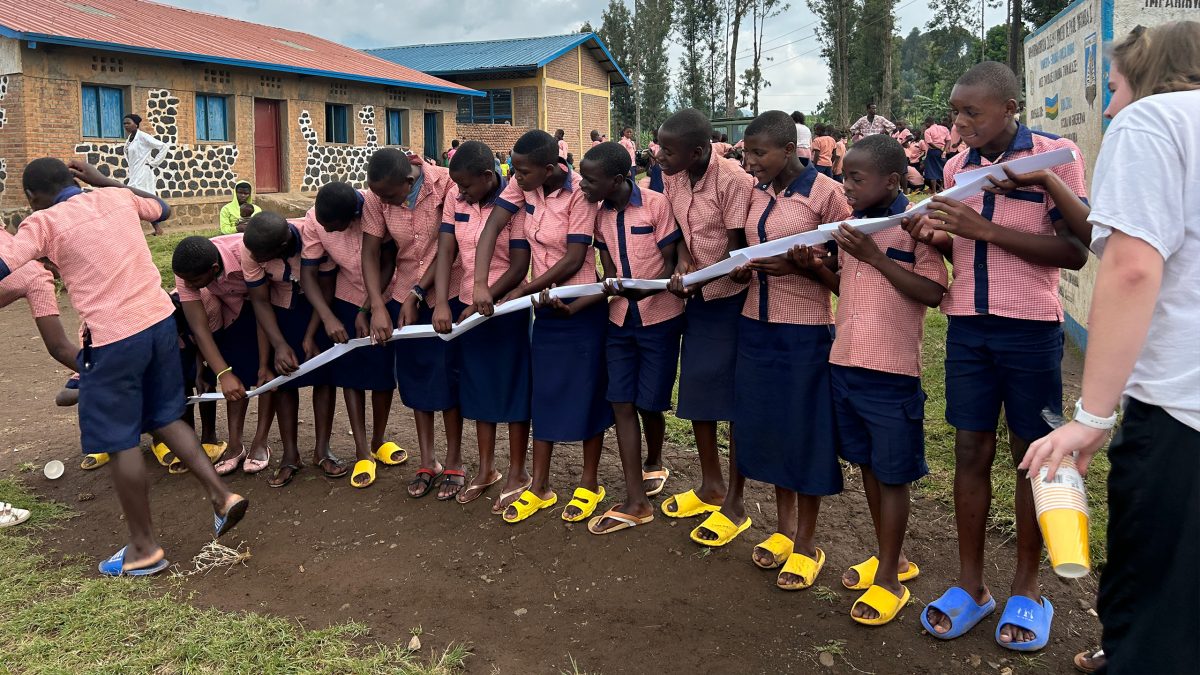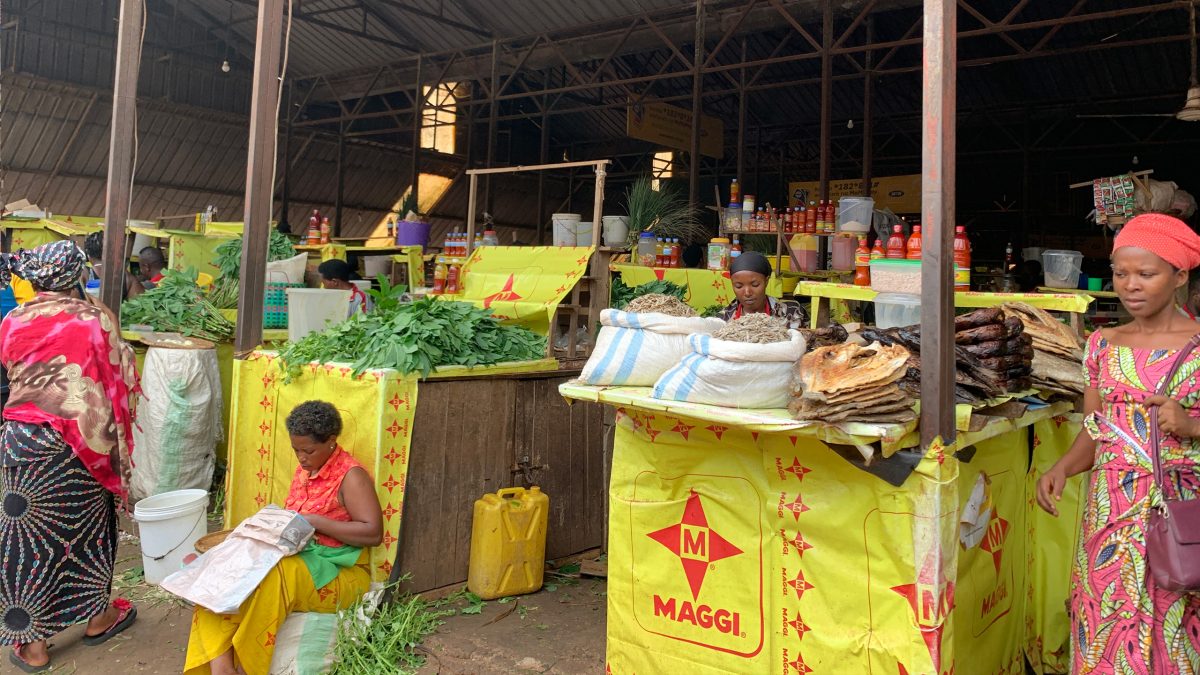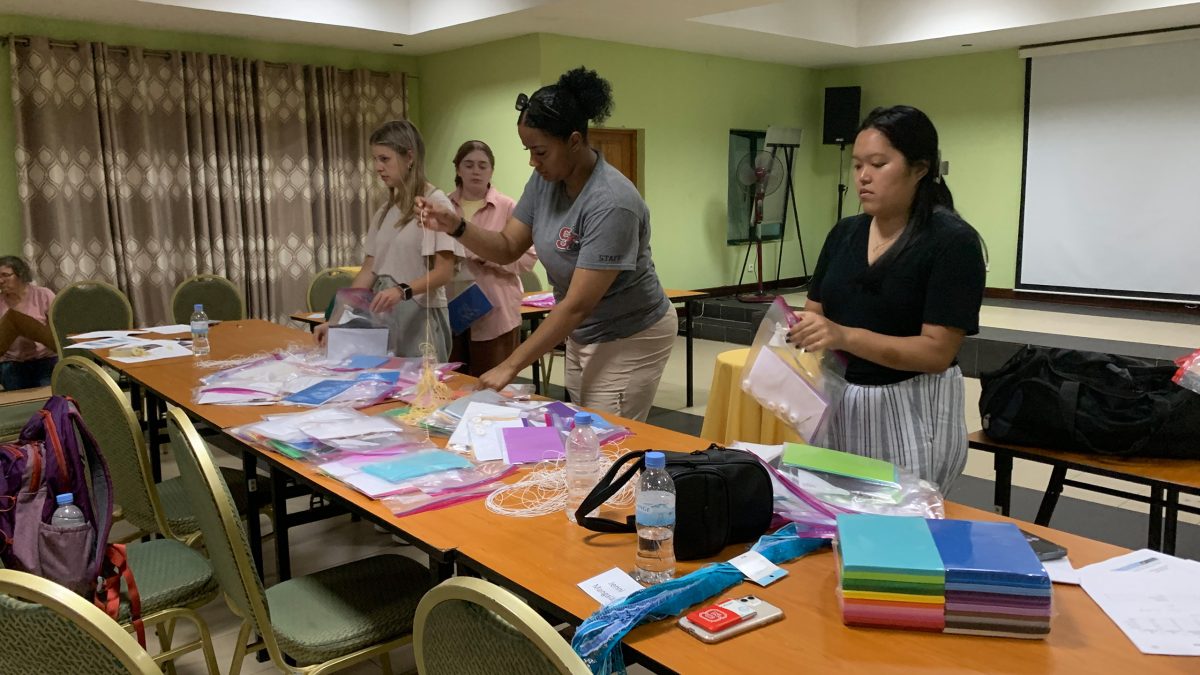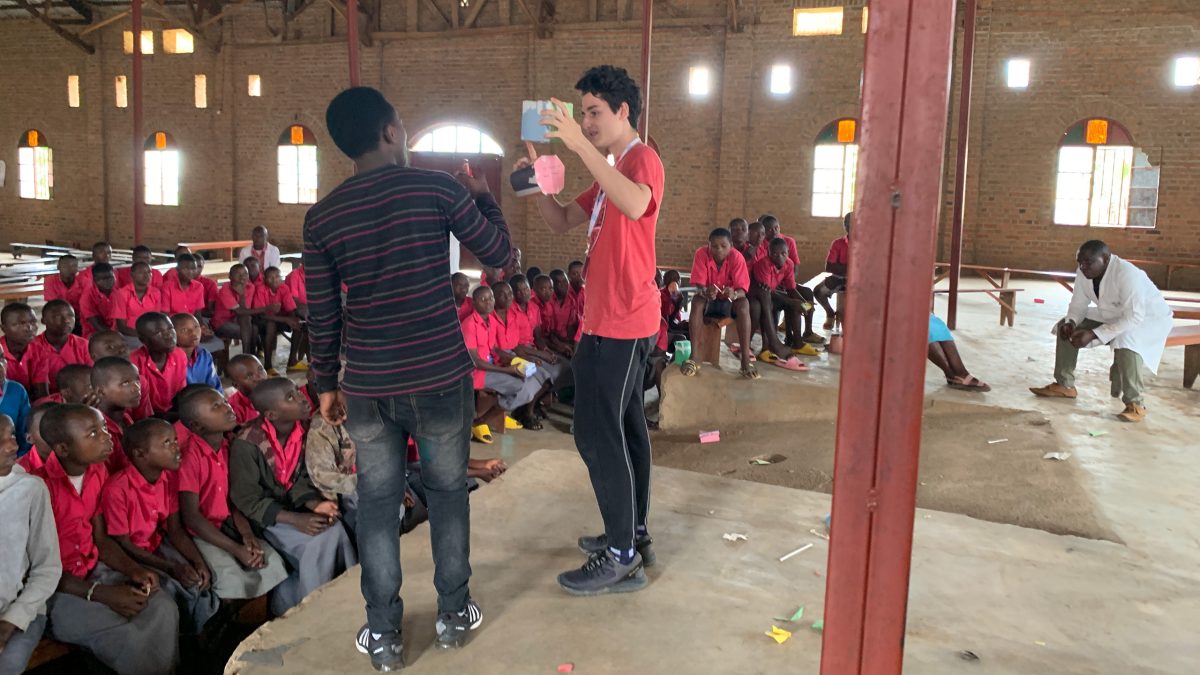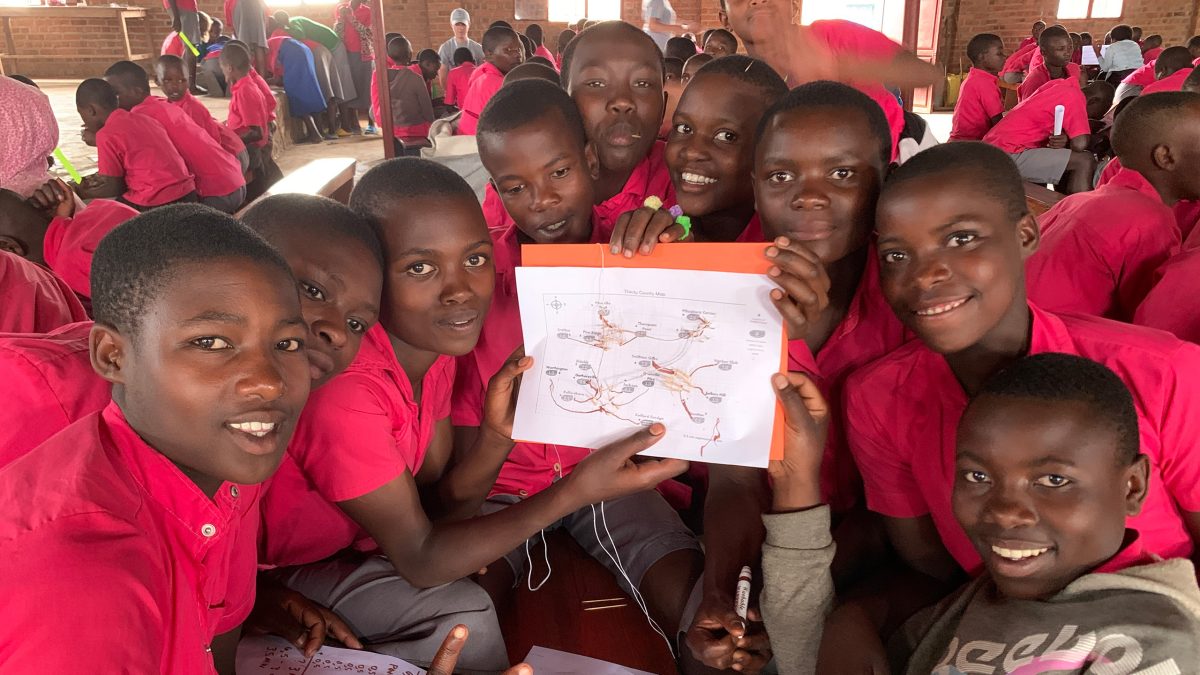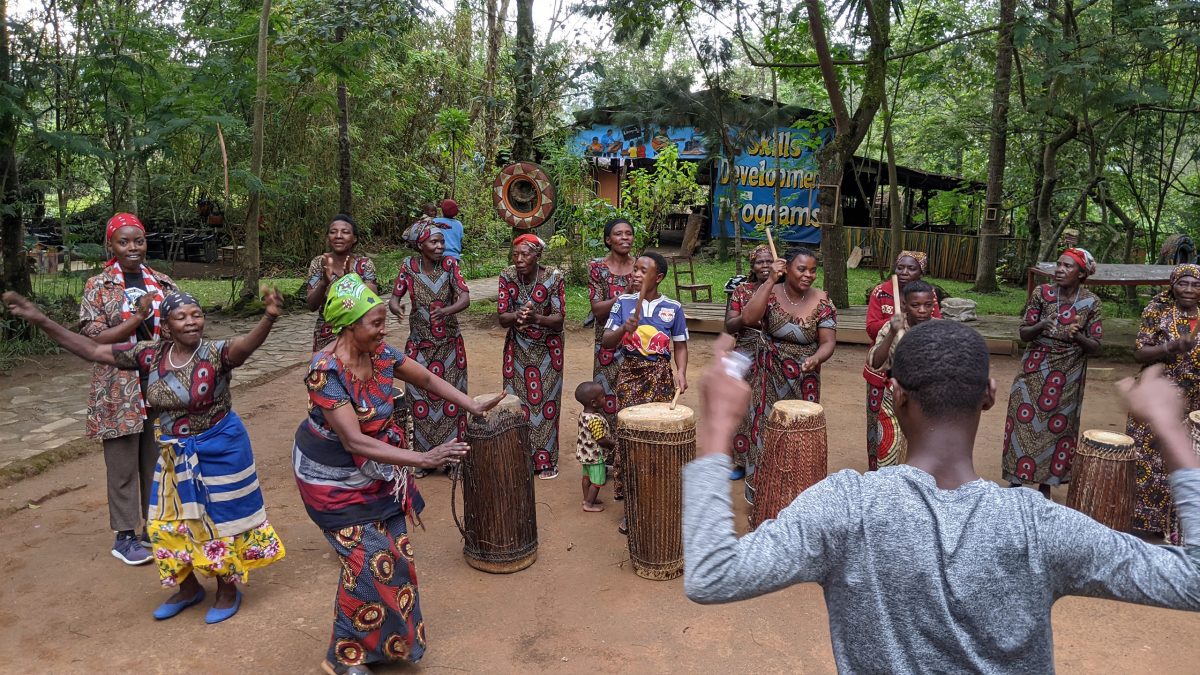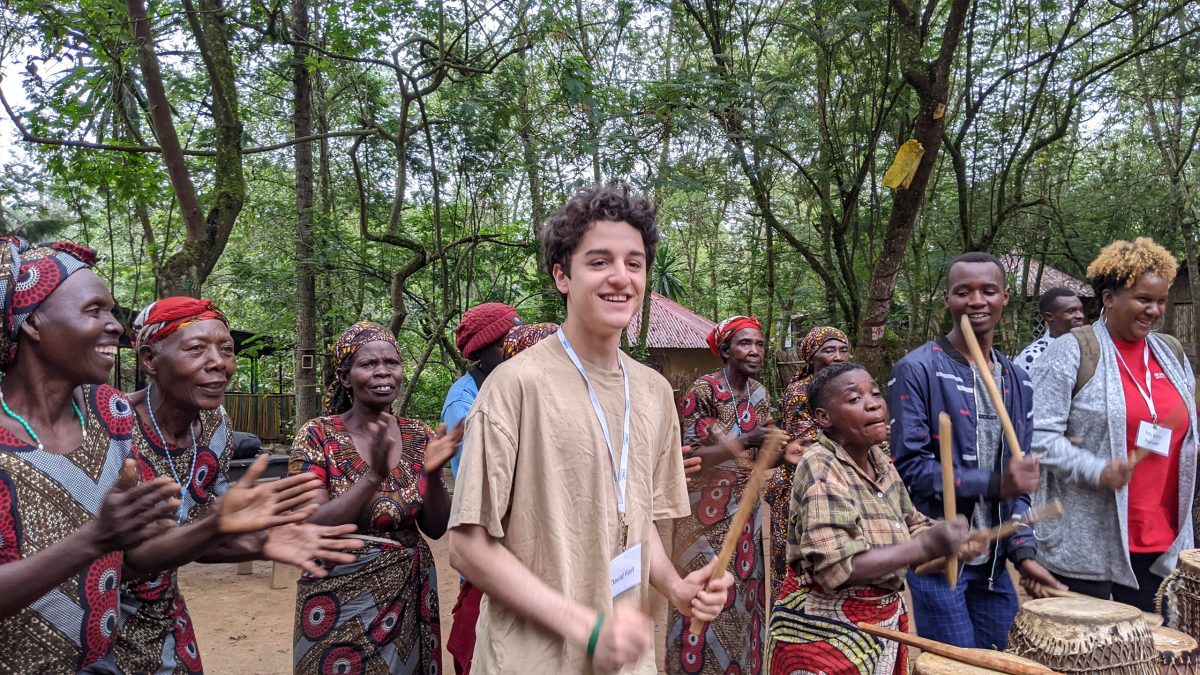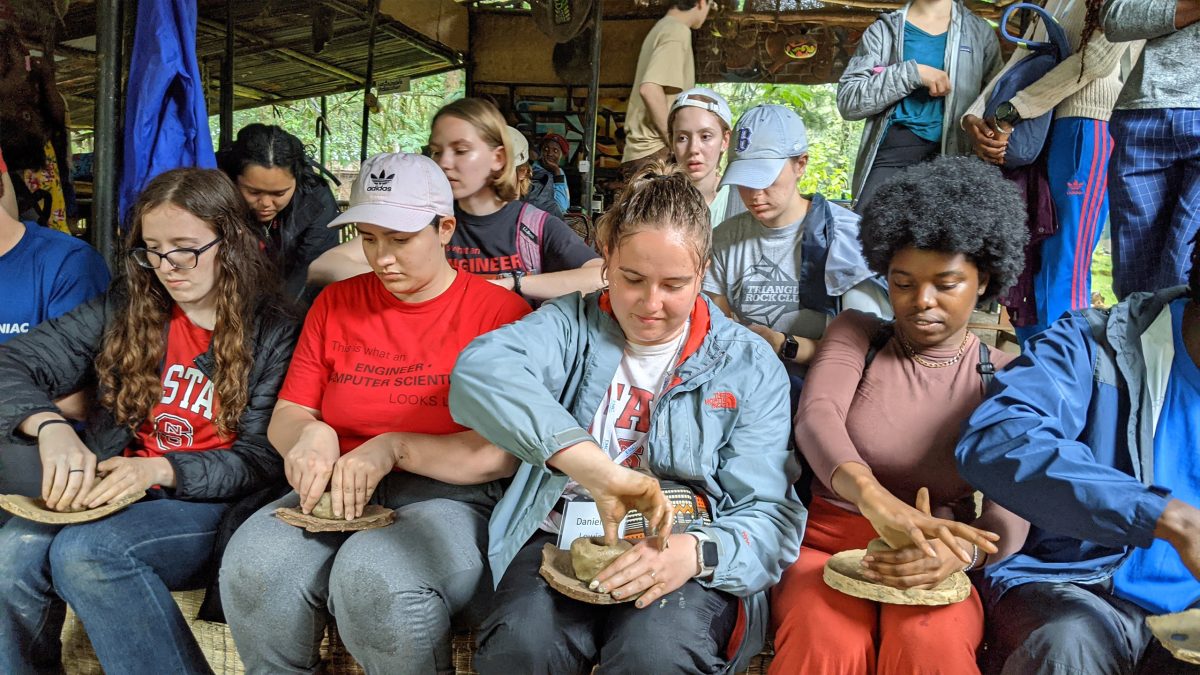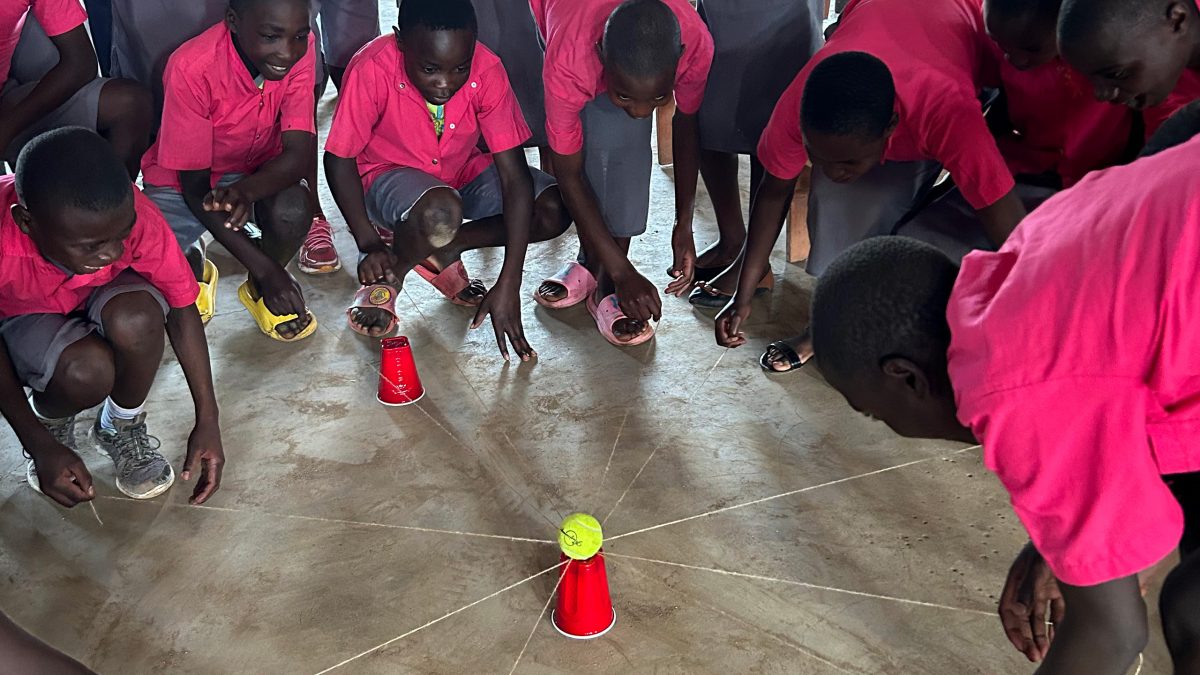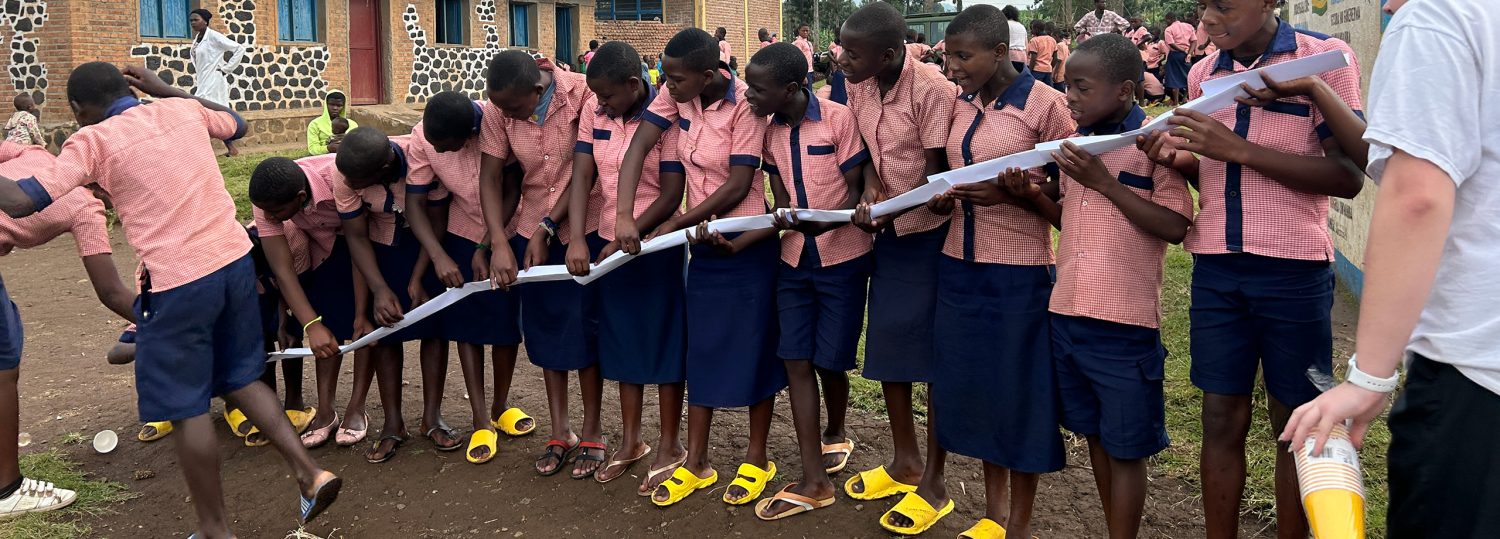For over eight months, ISE students Meriem Laroussi and Tyler Brading dedicated themselves to a journey that would take them to Rwanda. There they would help primary schools engage in hands-on engineering activities. But this was not a solo mission, as they led a team of 30 people through NC State’s Alternative Service Break Program (ASB). This initiative gives students a unique learning experience where they directly serve a community while fully immersed in the culture.
The Rwanda team comprised six other ISE students (Danielle Lewis, Nehemiah MacDonald, Greta Perez Cabo, Meredith Robbins, Claire Shepherd, and Kari Sutton), six more local university students, three non-governmental organization partners, and ISE professor Kanton Reynolds as the faculty advisor. The trip was a massive undertaking, but the team was ready.
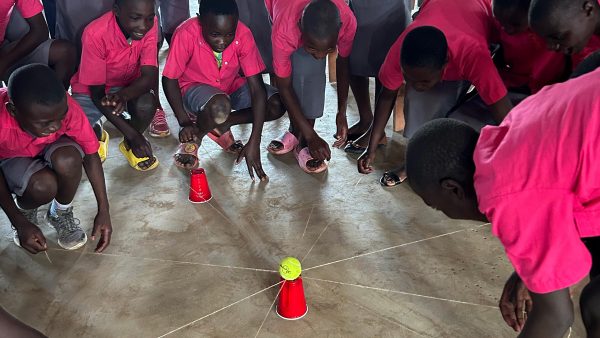
together to balance a tennis ball using string and transport it to atop the red
solo cup without dropping it.
During their week in Rwanda, the team split into different groups, each attending a different primary school. “We worked with 435 5th and 6th-grade students to teach and facilitate hands-on engineering activities,” recalled Laroussi. The team used activities from NC State’s Engineering Place and local engineering camps to promote team building and practical problem-solving skills. “We also were able to provide a substantial amount of donations, including notebooks, pencils, and erasers for all 435 students and chalk, rulers, scissors, and other supplies for the teachers,” explained Laroussi. But the experience was not just about engineering but also about exposing Rwandan students to American culture and what it means to be a college engineering student.
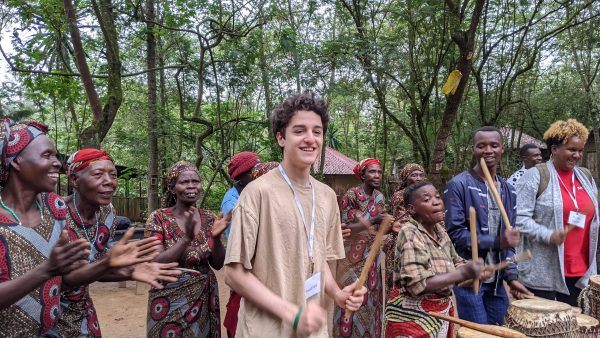
the women of the Red Rocks cultural center in Musanze.
The ASB participants had the opportunity to interact with a new culture, and for Brading, that was one of the main reasons for joining the program. She joined the program after hearing about other engineers’ experiences on service trips. “I knew it was a great opportunity to get out of my comfort zone, immerse myself in a different community and build strong relationships with people I may never have met,” she explained. After her first trip to Rwanda her freshman year, Brading knew she wanted to return and continue to help. “It was such a great community and life-changing experience. Rwanda is a gorgeous country filled with many hills and amazing wildlife, but the vibrant people is what led me to go back,” she explained. Laroussi shares the same sentiment about why she chose to spend her ASB trip in Rwanda. “I have a personal interest in exploring Sub-Saharan Africa and wanted to develop my own understanding of Central/Eastern Africa, free of the influence of Western media,” she recalled. Additionally, this experience aligned explicitly with her interest in engineering education and was a collaboration with the Women and Minority Engineering Program (WMEP), with whom she had a strong relationship.
Both students chose to lead this project for similar reasons. For Brading, she wanted to create an environment for students to grow, build relationships and gain new perspectives, “Just like I had when I was a participant.” Laroussi agrees that after her first time as a participant, she knew she wanted the students to experience the same style of leadership that she had. “Being a student leader is a vastly different experience because you have the authority to craft the team dynamic,” Laroussi explained. “Tyler, my co-lead, and I worked very well together and were able to make decisions on what our days looked like each day in Rwanda and what activities we wanted to do to form a stronger team bond.”
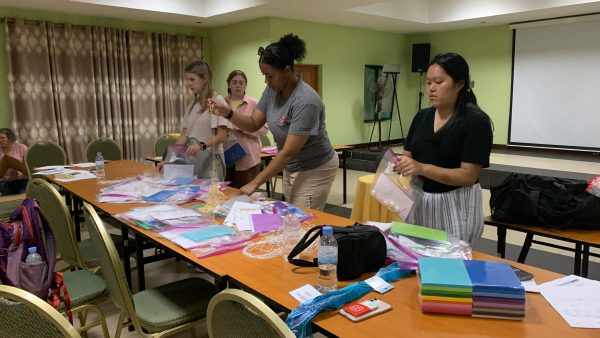
team to pack the kits for the engineering activities they would be doing the next day.
Here we see participants packing items for the Sweet Feet activity where students
got to make their own shoes.
Leading a project like this was no easy feat, but Laroussi and Brading used their ISE skills to maintain efficiency and communication. “Instead of Tyler and I being responsible for handling all daily operations, we delegated tasks to team members, sort of like an assembly line,” shared Laroussi. “This way, the workload was distributed evenly, and there were no major bottlenecks if Tyler or I were occupied with something else.” They also strategically planned the experience so that they completed much of the prep work before leaving. Preparations included packing over 500 engineering activity kits to avoid spending hours in Rwanda after a long day.
During their planning process, Laroussi and Brading also developed a standard operating procedure (SOP) so that next year’s team leaders could have a smoother planning process. Since the students found that some situations can be chaotic and unstructured at times, the SOP helped them through the process and ensured that future trips could be just as, if not more, organized. Despite the challenges of planning a service trip for 30 people, the students learned valuable skills. “The project management skills I gained from ISE allowed me to create an experience that was as effective and efficient as it could be,” said Brading.
The amount of time, energy, and passion that went into making this ASB trip a success was remarkable. “I encourage everyone to apply to ASB,” said Brading. “There is a multitude of service experiences led by wonderful students.” Laroussi shared the same feelings, “The Alternative Service Break Program is an incredible opportunity for any student at NC State,” she stated. “The experiences are quite literally life-changing and very affordable, especially for engineers since the College of Engineering covers the cost of the flight through the EYE [Engineer Your Experience] fund.”
Photos
